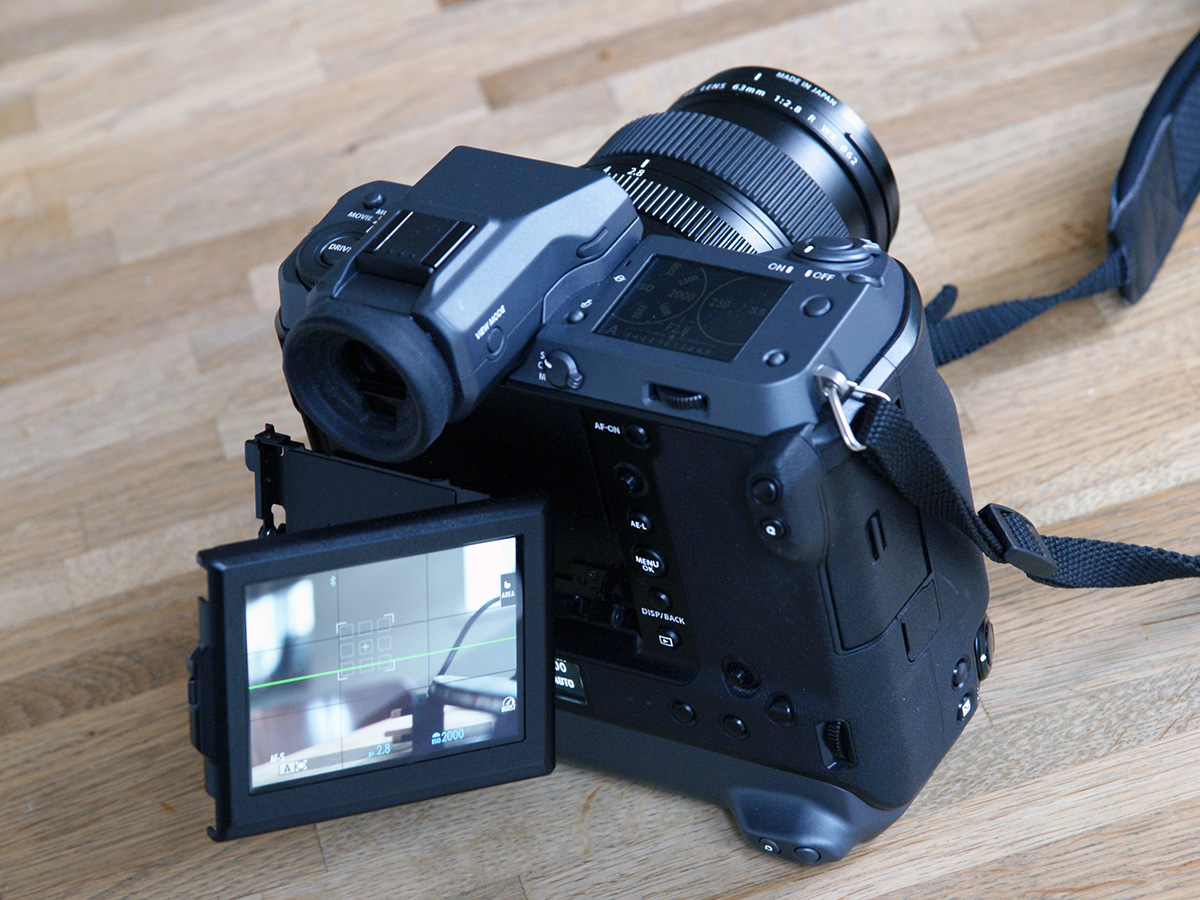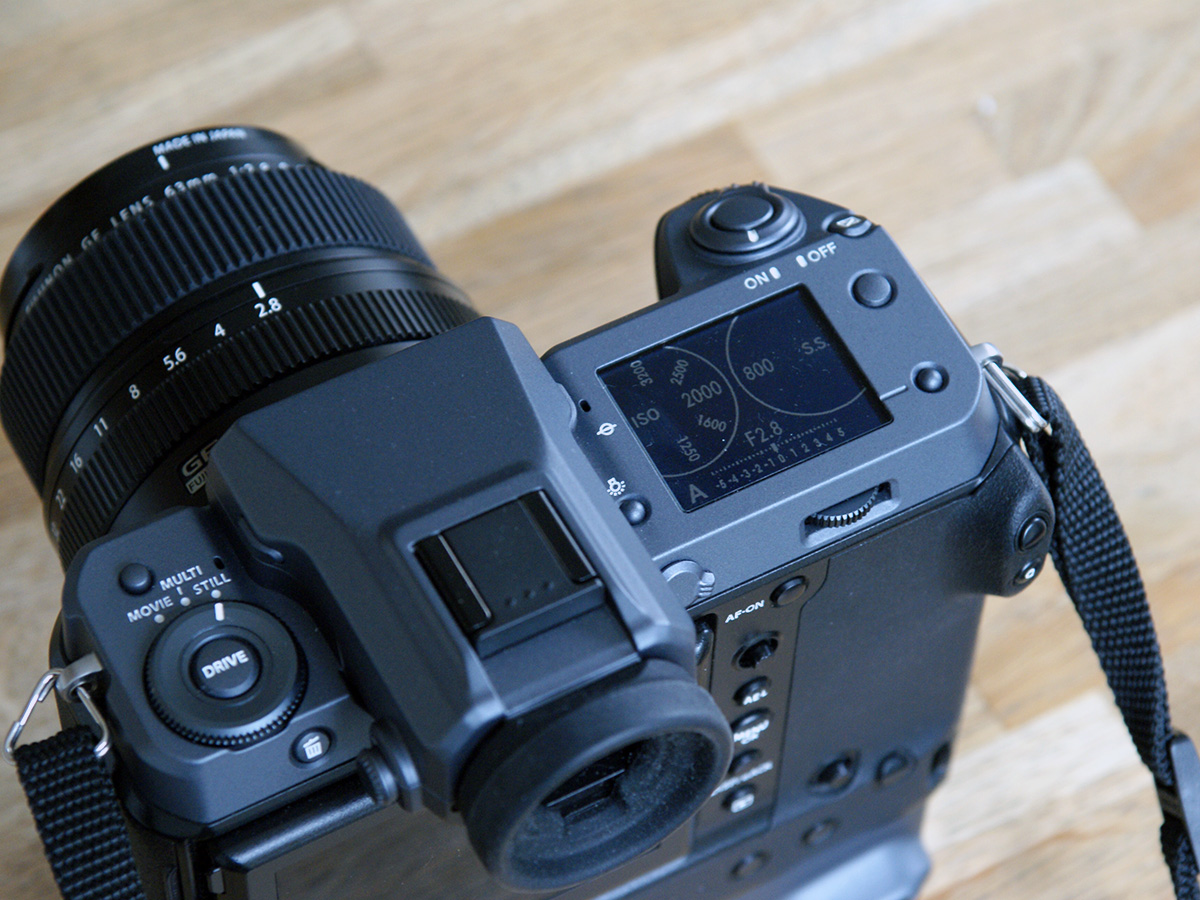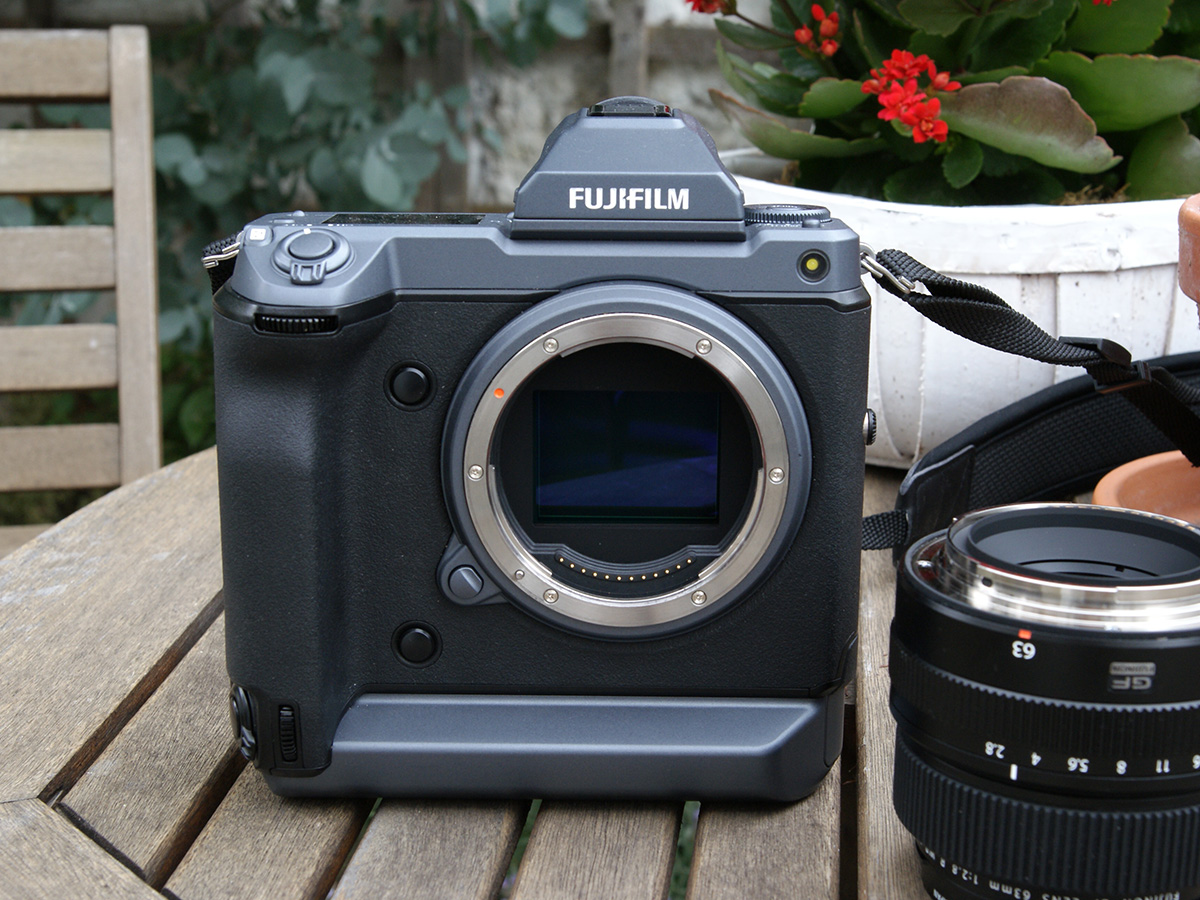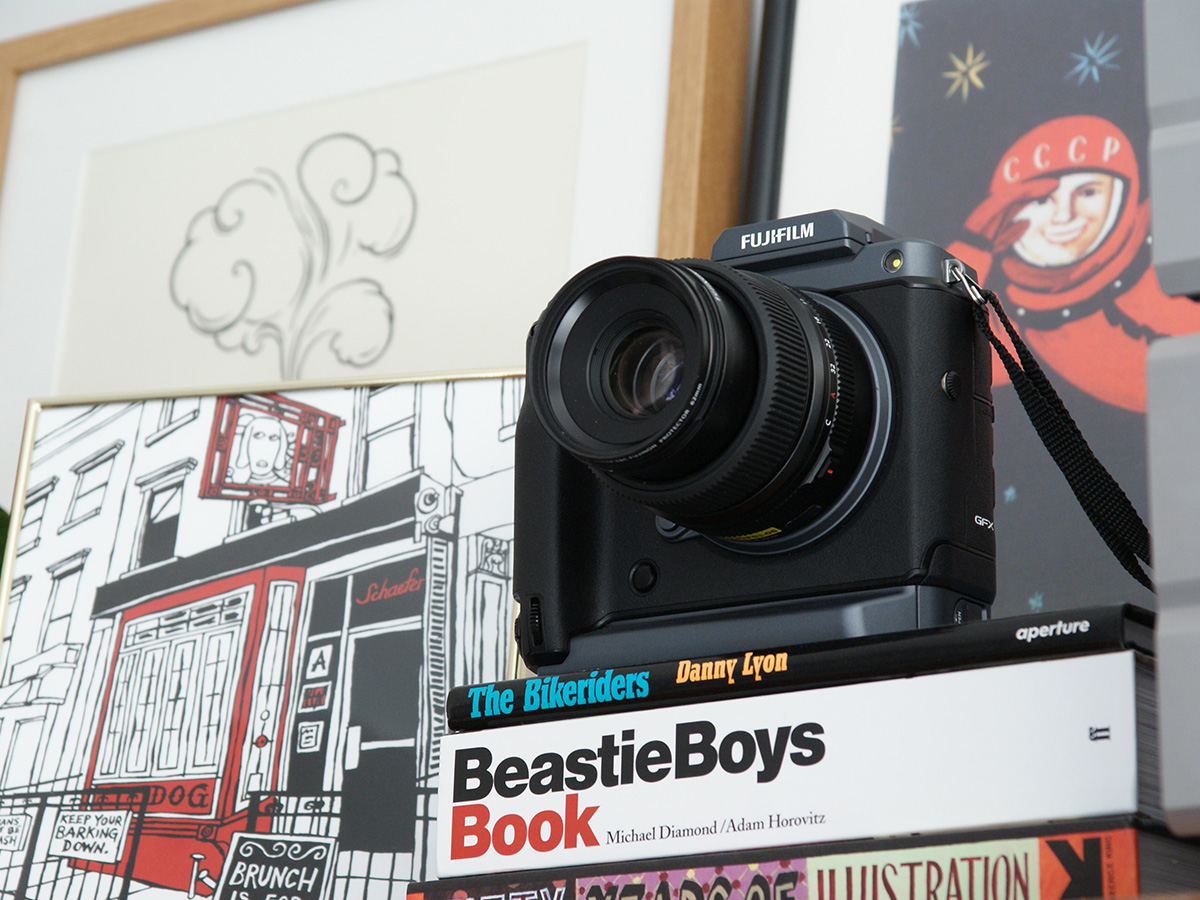Fujifilm GFX100 review
Medium format, large price tag
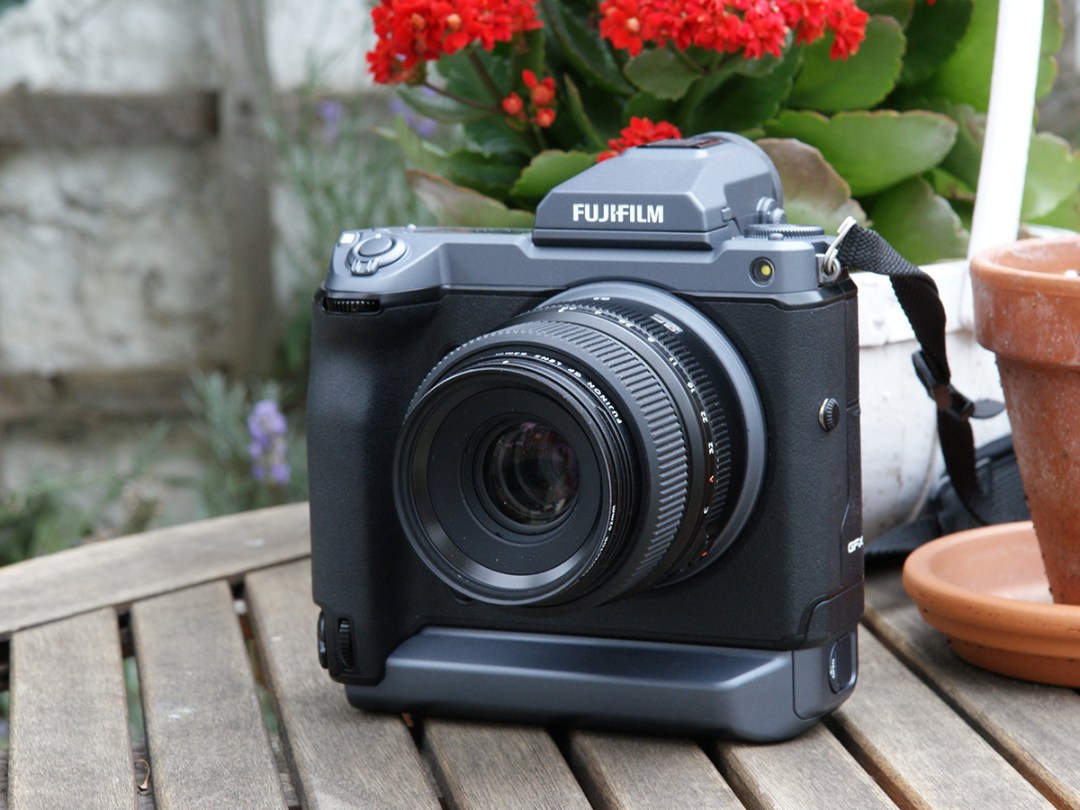
There’s no getting around it: the Fujifilm GFX100 is priced way out of the reach of most of us.
At a shade under £10,000 (and that’s before you’ve even thought about a lens), it’s by a big margin the most expensive camera in Fujifilm’s entire range, and quite possibly the priciest camera that’s ever been reviewed on these here humble pages. And yet, review it we will – because the GFX100 is such an interesting and unique prospect.
As a weighty medium-format digital camera with over 100 megapixels at its disposal, you might assume it’s designed for the studio – whack it on a tripod, get a background, a bunch of lights, a willing model and hey presto, you’re Rankin. In fact, Fujifilm has incorporated most of the features you’d find in its smaller mirrorless X series models, including the user-friendly likes of face detection and eye autofocus, making this entirely usable as a street photography-friendly walk-around camera as well as a studio or landscape workhorse.
Does that really make it worth as much as a small car, though? Let’s find out.
Design: Big boi
It feels like Fujifilm wants to make the GFX100 feel worth every penny of its asking price. It’s a big, heavy unit, with an extra grip at the bottom for more comfortable portrait mode shooting (and with space for an extra battery), a tilting 3.2in touchscreen and a removable OLED viewfinder.
The mode dials of other Fujifilm cameras are gone, replaced by a huge, detailed LCD panel on top. This panel remains “on” even when the camera is powered down, and gives at-a-glance info on the ISO, shutter speed, aperture and exposure compensation settings, which is nice. Many might have preferred physical dials, we suspect, and more than once I found myself shooting at a totally inappropriate ISO setting because I’d twiddled one of the other dials trying to change the aperture. Still, it’s something you’d get used to over time.
There’s a second display detailing settings beneath the screen, too – so if you’re looking for the current settings, they’re never likely to be far away.
The GFX100 is totally hand-holdable, unlike some medium-format cameras – mostly due to its two pleasingly chunky grips. That said, it’s still a lot heavier and more awkward than any APS-C or full-frame mirrorless camera; in fact, it’s a fair bit bigger than Fujifilm’s other medium-format digital models. Transporting it about in a normal bag can be a bit of a palaver, especially if you want to bring more than one lens along for the ride.
Features: a user-friendly haul
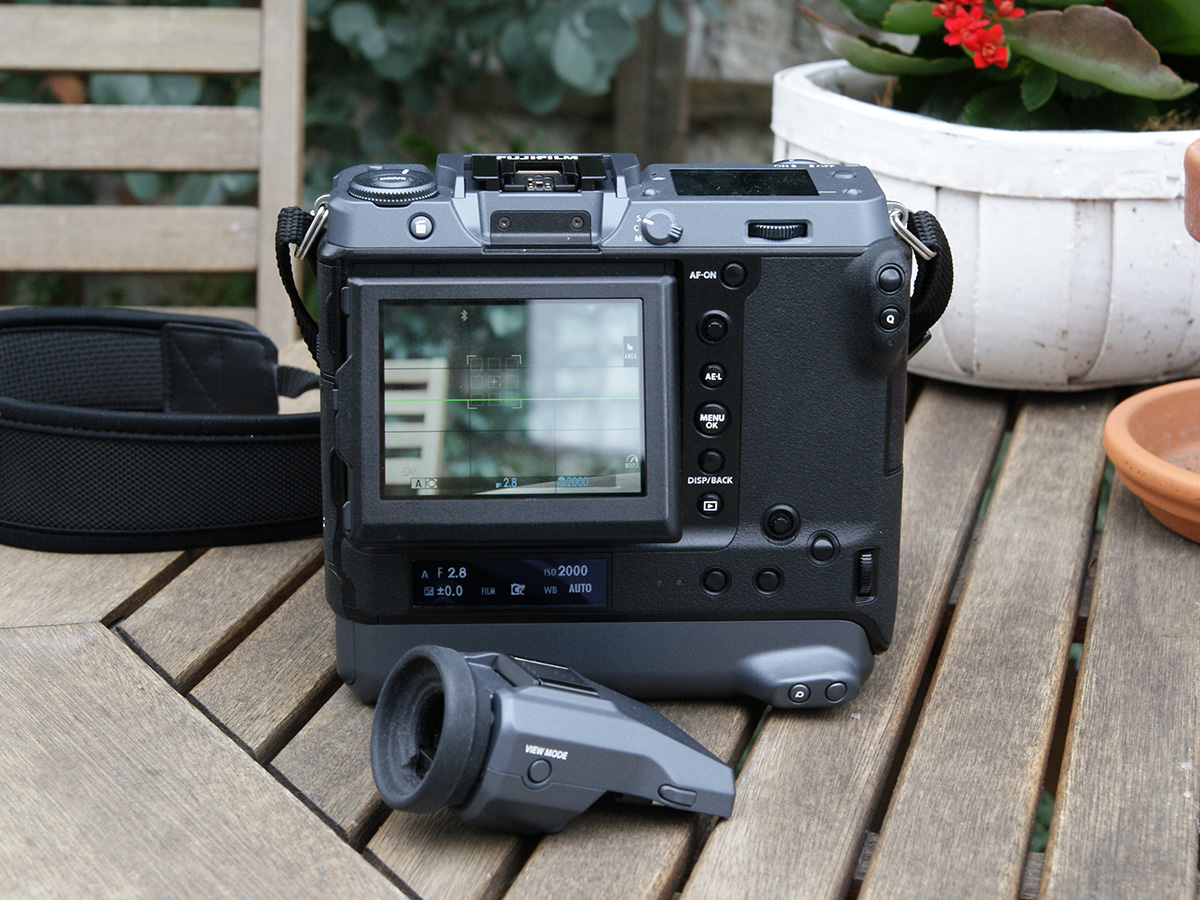
Medium format has traditionally been the preserve of “serious photographers” – the type of photographer who prefers to do everything manually in order to maintain the utmost levels of control over the results.
Those of that persuasion are, of course, welcome to tweak everything to their heart’s content here – but it’s also fully equipped for the user who’s more interested in pointing, shooting and letting the camera handle everything else.
There’s 5-axis in-body stabilisation to mitigate the effects of your wavering hands, which works well and gives you a few stops’ grace when shooting without a tripod.
There’s the same wonderful autofocus system as seen in the Fujifilm X-T3, which features touch-to-focus on the screen and face and eye detection for much easier portraits. It’s brilliantly accurate, if not quite as lightning-quick as on the smaller camera. You may miss the odd snap as a result, but think of the much larger lens elements that need to be manoeuvred into place here and you can probably forgive that.
The battery life is also impressive, probably down to the fact that you can whack a couple of the suckers in there then get shooting and basically forget about charging for at least a day or two.
Image quality: Revolutionary resolution
The huge sensor and its 102MP resolution give the GFX100 qualities you won’t find on APS-C and full-frame mirrorless cameras.
For starters, the physical size of the sensor makes it easier to achieve a shallow depth of field, even in situations where other cameras would render pretty much the entire scene in sharp focus. Slap on a fast lens (I was sent, among others, Fujifilm’s 63mm f/2.8) and you can take fantastic portraits with lovely bokeh, at distances you couldn’t on a camera with a smaller sensor.
A large sensor usually means improved low-light performance too, but the sensor’s pixels are extremely tiny here (a consequence of having to fit over 100 million of them in a 43.8 x 32.9mm space) and their light-gathering abilities aren’t notably stellar. In short: the GFX100 does a decent job in dim conditions, but it’s not really designed with that kind of work in mind.
What it does superbly. when used in good lighting conditions, is detail. Honestly, I don’t think I’ve ever used a camera that resolves this much detail – just take a look at the 100 percent crops of the cat’s eye and flower in our sample images to see what’s available. This incredible resolution means you can create prints of enormous, wall-filling sizes from the shots, or alternatively crop images down and still maintain a greater level of detail than most other cameras deliver before cropping.
You also get great colour, contrast and the rest from the JPEGs, with the ability to use Fujifilm’s excellent “film simulation” modes to give your images the look you’re after straight from the camera. And of course you can shoot in RAW if you want maximum editing capabilities after the fact – just be aware that most photos will be well over 100MB each.
Finally, we should mention the video, which is fine. It’s definitely a stills camera first, but its 4K and 1080p options do produce sharp, detailed and smooth results (there’s some rolling shutter evident – as you might expect given the sensor’s size), and if you want to shoot occasional movies alongside your photos there’s not much to moan about here.
Fujifilm GFX100 verdict
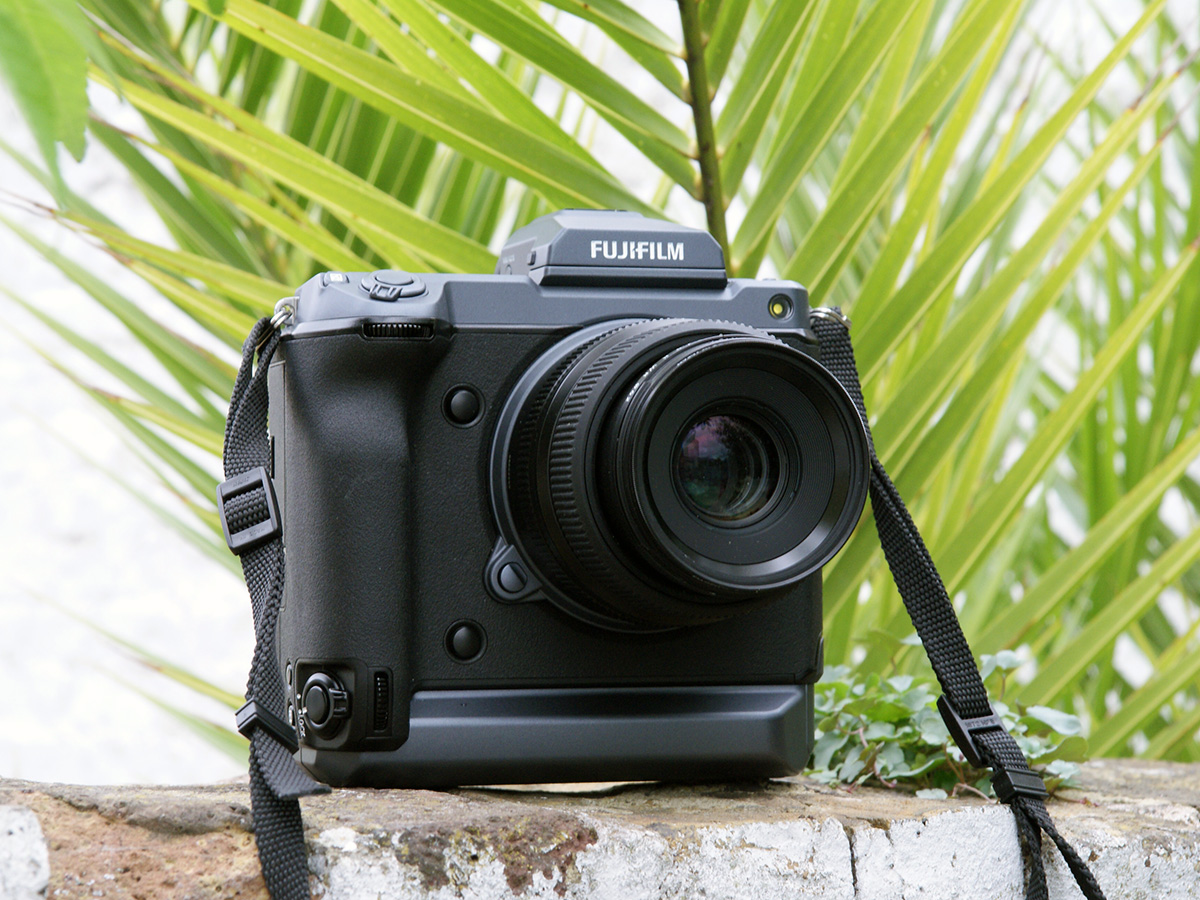
While reviewing the GFX100, I kept trying to work out who it was actually made for.
Super-dedicated landscape photographers, sure – but in today’s web-first world there aren’t many of them around, and even fewer with ten grand to burn. For the vast majority of us, the sheer level of detail here isn’t something we need, especially when the trade-off is a very heavy camera and a very light bank balance.
There’s no denying that this is an exceptional camera that takes fantastic images while being refreshingly easy to use, but 99.9 percent of people would be better off with something like Fujifilm’s own X-T3 (around £1350), a fantastic camera at a fraction of the price, or Sony’s 61MP A7R IV (£3500), which promises huge levels of detail in a significantly smaller, lighter and cheaper body.
Stuff Says…
An outstanding camera (that you probably shouldn’t buy)
Good Stuff
Produces brilliantly detail-rich shots
Surprisingly user-friendly
Great build quality and battery life
Bad Stuff
Hefty in the hand
Lethal on the wallet
102MP feels like overkill
